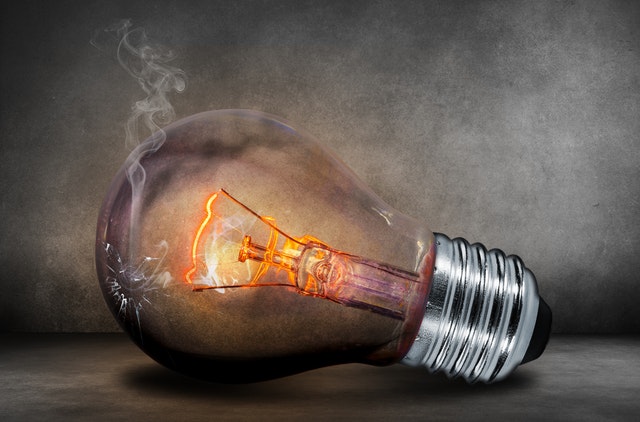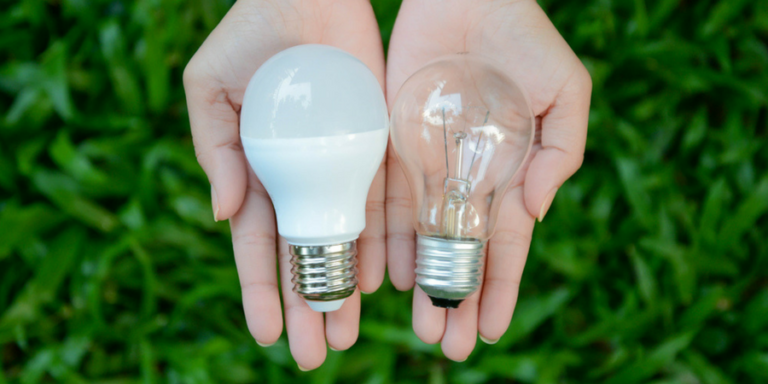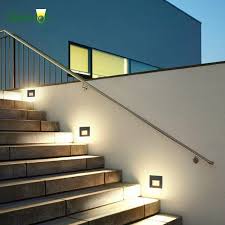LED Lighting
The operating life of a light emitting diode (LED) is unaffected by turning it on and off. While lifetime is reduced for fluorescent lamps the more often they are switched on and off, there is no negative effect on LED lifetime. This characteristic gives LEDs several distinct advantages when it comes to operations. For example, LEDs have an advantage when used in conjunction with occupancy sensors or daylight sensors that rely on on-off operation. Also, in contrast to traditional technologies, LEDs turn on at full brightness almost instantly, with no delay. LEDs are also largely unaffected by vibration because they do not have filaments or glass enclosures.

Reasons Why My LED Light Bulbs Aren’t Lasting
LED light bulbs typically boast an impressively long lifetime. It’s one of the many features that makes them worth the extra quid, but what if you find that your LEDs are burning out before their time? You’re trying to make the transition to energy efficient lighting and you’ve followed the guides, but the bulbs just aren’t lasting as long as they’re supposed to. It’s a frustrating experience and it can be hard to determine where the situation is going wrong, but we can help you avoid it by shining a light on what could be causing these failures:
Dubious dimming components
LED light bulbs are dimmable, with two caveats:
- They have to say they are dimmable on the package. This indicates that they were specifically built to be dimming-capable.
- They have to be connected to an LED-compatible dimmer switch.
Standard LED light bulbs aren’t equipped with the components for dimming, and old dimmers just aren’t built for the low wattage of an energy-efficient LED bulb. While an old dimmer switch may work for a while and a standard LED light bulb may still technically dim, at some point you will run into problems with high-pitched buzzing or whining noises, flickering, and premature light bulb burnout.
SOLUTION:
Select light bulbs that specifically state they are dimmable and upgrade to an LED-compatible dimmer switch:
High voltage
If you find yourself burning through multiple light bulbs throughout your home in the span of months, or you notice the bulbs burning more brightly than they should, the mains to your house might be too high. In the U.K., the electricity entering your home should fluctuate around 230V at 50 Hz. If it is consistently much higher than that, the overpowered voltage will cause any type of light bulb to burn out faster than it should.
SOLUTION:
If you suspect this is the issue, have an electrician test the voltage in your home or contact your electrical provider to have it corrected.
Overheating
Unlike incandescent light bulbs, LEDs don’t produce light using heat. This is part of what makes them so energy efficient. The downside is that their components can be sensitive to overheating, which can cause them to burn out prematurely. LEDs can overheat if they:
Are used in enclosed fixtures but aren’t designed for them (packages usually specify what types of fixture a certain bulb is ideal for).
Are too large for the fixture—just because the base fits, doesn’t mean the bulb should be there.
SOLUTION:
Select LED light bulbs that are the right size for your fixture so it gets proper ventilation, and only use bulbs rated for enclosed or semi-enclosed fixtures in places like recessed lighting fittings.

LED’s Sound Good, But They are Too Expensive”
The many pros of LED lighting are often overshadowed by a single myth; LEDs are expensive! Simply put, an LED bulb can cost a few dollars. Earlier models were very expensive. LEDs have been around for many years now and they are readily available at all price points. It can be hard to justify retrofitting to LEDs when you still believe this myth that LEDs are too expensive. With improvements in manufacturing, increased market saturation and rapid-development of LED technology, the benefits of an LED upgrade supersede all alternatives.
Details
The Light Emitting Diode (LED) itself is the most efficient lighting technology yet.
LEDs effectively emit light in specific directions instead of scattering it to all spaces, reducing light pollution.
Incandescent lamps waste up to 90% of their energy as heat. LEDs waste very little energy.
In certain conditions a single bulb can last over 20 years. This cuts labor hours of maintenance, costs of replacement bulbs, and of course the savings on the utility bill over that time will make up for the initial cost.
Solution
This LED lighting myth is easily avoided with smart planning. Many utility companies offer rebates as an incentive to upgrade to LEDs. There are other incentives offered for commercial properties who are upgrading to LED fixtures as well. Rebates for well designed projects that save a lot of energy can add up quickly and take thousands of dollars off the cost of a light retrofit project. Ask your lighting professional if project or equipment rebates for lighting are available in your area.

How to install Solderless connectors for LED strip lighting:
- Cut along the mark line, and tear a little bit of 3M backing tape from the mark. If 3M tape is not peeled off a little, it will be harder to insert the strip into the connector.
- Lightly pull the black plastic lock out from the solderless Pulling too hard may damage the LED solderless connector.
- Insert strip into the solderless connector. There are two sides to the connecting tray – make sure the wider of the white sides faces up. This is the top.
- Make sure the soldering pads fully touch the conjunction metal.
- Push the plastic lock back towards the middle into the lock position. Be gentle and make sure the mounting tray is securely closed or the lights will not light up. Double check the markings of (+) and (-) to make sure which color wire corresponds to each.
- For long term use, try and use liquid tape or a bonding material to make sure the connector does not become loose.
Do LED Lights Create Fire Risks?
LED lights do not emit light from a vacuum as most other bulb types do. The illumination is provided by something solid known as a semiconductor. If you are considering changing to LED lights, whether you are looking at a retrofit of full fit solution, you will see whole lists of benefits for changing from incandescent or fluorescent bulbs. These tend to focus on the cost savings and the environmental friendliness of LED, but it is also important to note that they have a much lower chance of causing a fire.
Overheating is one of the reasons a bulb could start a fire, but that is highly unlikely to happen with LED lights. They may feel hot to touch, but they produce light at a significantly lower temperature than other bulbs. Traditional bulbs use a filament, which loses a lot of energy through heat emissions, and incandescent bulbs generate heat as infrared radiation.
The fact traditional lights radiate so much heat has meant they are sometimes used as heat sources themselves, poultry incubation and heaters for reptiles being just a couple of examples.
As LED lights do not affect the ambient temperature they are ideal for small, confined or temperature-controlled areas.
Less Heat, More Light
One of the reasons LED lights have such a long-life span is because the technology in place uses a heat sink, located at the bulbs base. This draws most of the heat to one area and keeps the electronics relatively cool. An LED light in its hottest part is approximately half the temperature of a halogen or incandescent bulb but emits the same amount of light. Traditional lights lose between 60 per cent and 95 per cent of their power to heat, so are far more likely to be a fire risk than LED lights. They hold their heat internally and use the bulk of their energy to produce light.
Could Retrofit LED Lights Be Your Solution?
If you are concerned about the state of your lights, or if they are near fabrics or materials that are easily combustible, you may be considering changing your lighting system to LED lights, but you could be worried about the installation costs.